 Web Front-end
Web Front-end
 PS Tutorial
PS Tutorial
 How to improve PS resolution? How to sharpen images in PS to improve clarity (implementation steps)
How to improve PS resolution? How to sharpen images in PS to improve clarity (implementation steps)
How to improve PS resolution? How to sharpen images in PS to improve clarity (implementation steps)
Previous article "How to use the PS repair brush tool for newbies? (The veteran driver will take you flying, get in the car quickly!)" introduces how to use the PS brush tool. The following article introduces our more common questions, which is how to make blurry pictures clear through PS processing? Let’s take a look at the steps to use the ps sharpening tool to improve the clarity of pictures!

How to use the ps sharpening tool
The first step is to open a blurry photo, as shown in the picture, it is quite beautiful. There is a blurry feeling, but if we want to make the picture clearer, we need to copy a layer first. We can use the layer copy shortcut Ctrl J to quickly copy, or drag the layer to the New Layer button.
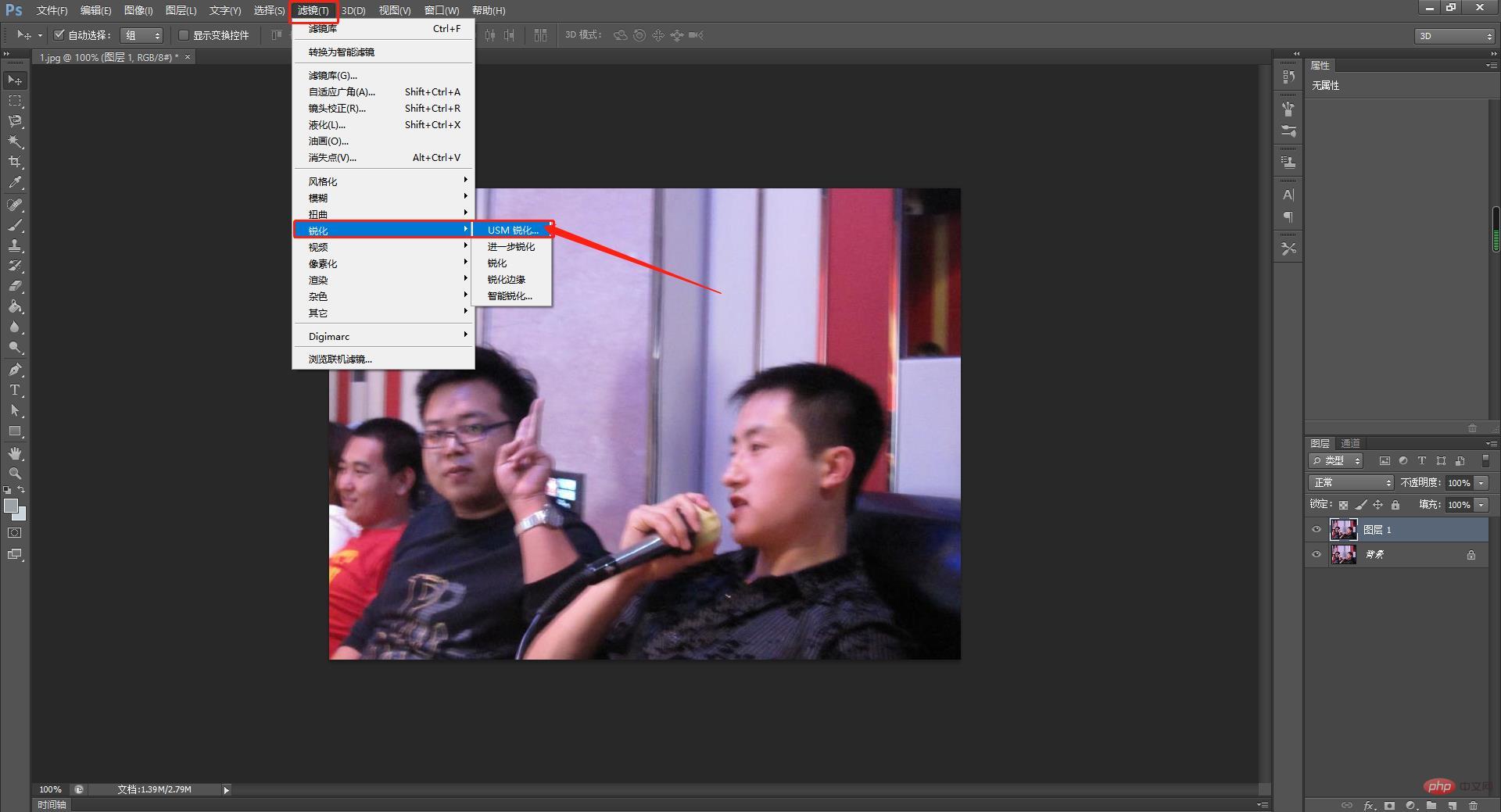
The second step is to perform some preliminary sharpening on the image. As shown in the picture, go to Filter--Sharpening--USM Sharpening. , this is more commonly used.

The third step is to set the parameters in the USM sharpening parameter setting box. Set the sharpening value to 60-160, and set the radius to 3 pixels. Adjust accordingly. Set the number for the final picture effect.
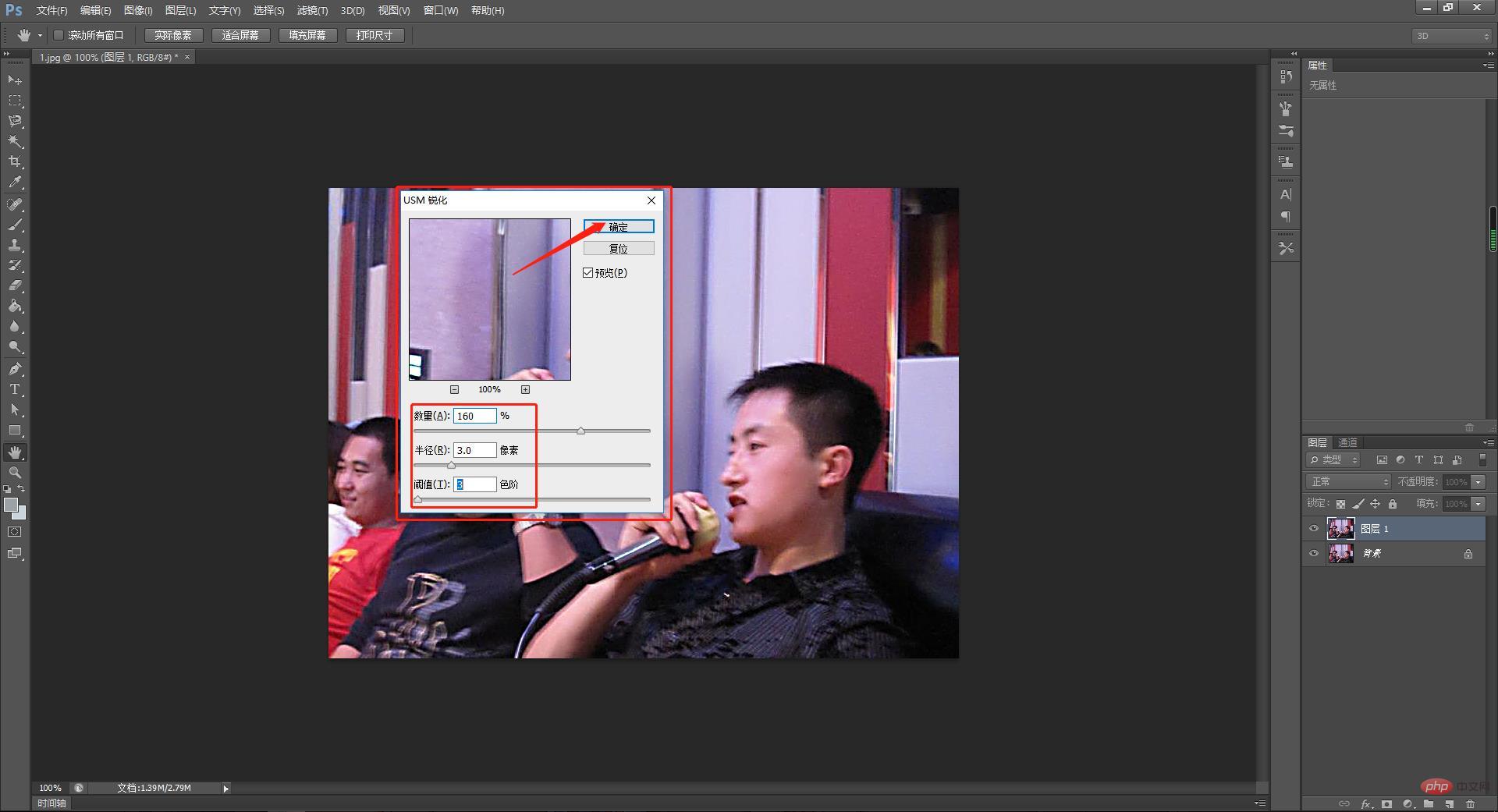
The fourth step, next we want to use the filter to illuminate the edge, then first we decolorize this layer, as shown in the picture, We use the Image-Adjustment-Decolor command so that our photo becomes black and white, which helps us distinguish between light and dark.
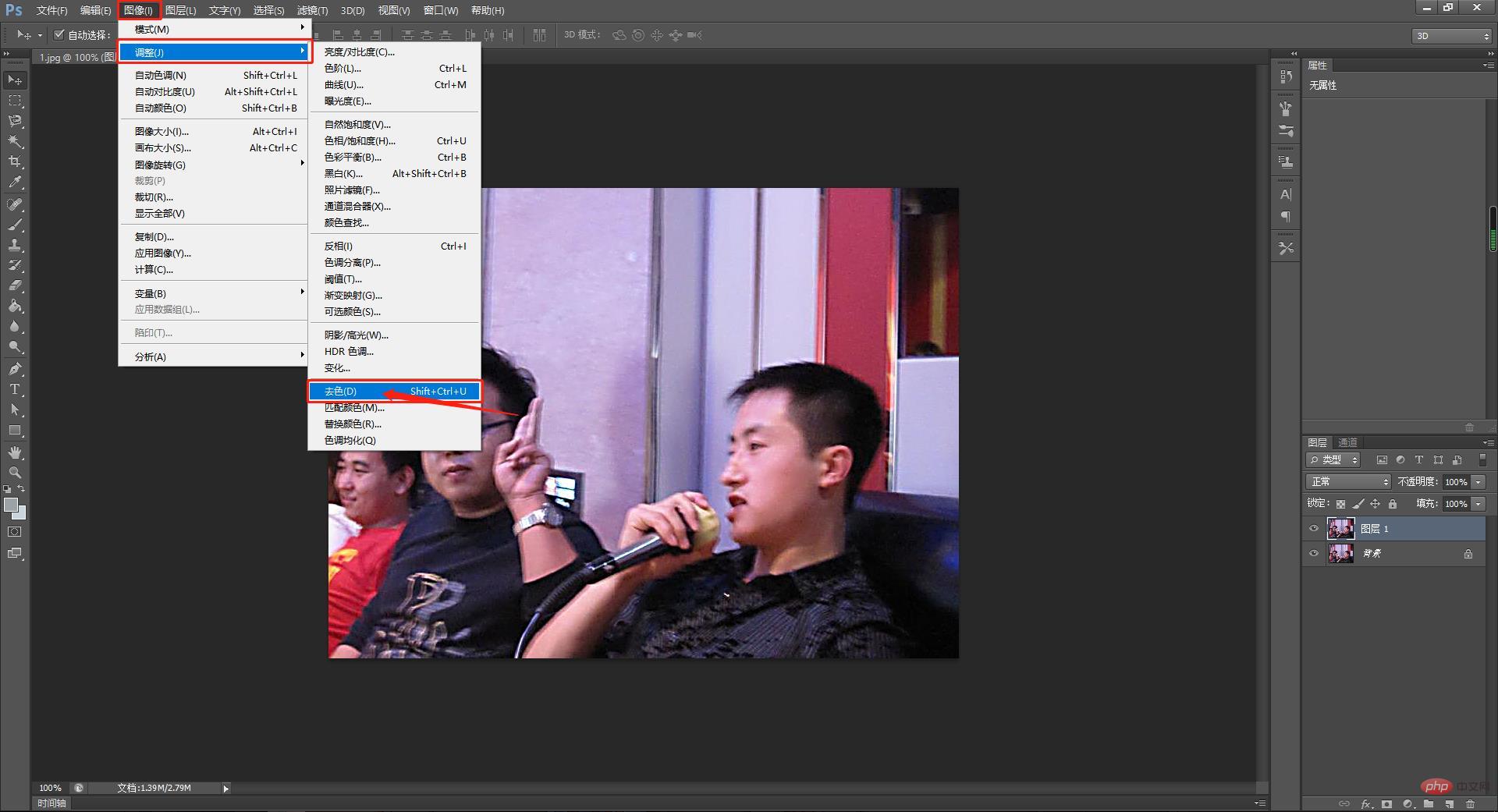
The fifth step, then if we want to make the layer feel clear, we need to use high contrast retention, as shown in the picture, in Filter--Others-- High contrast is retained. Take a look at the effect of the picture. These values can be modified.
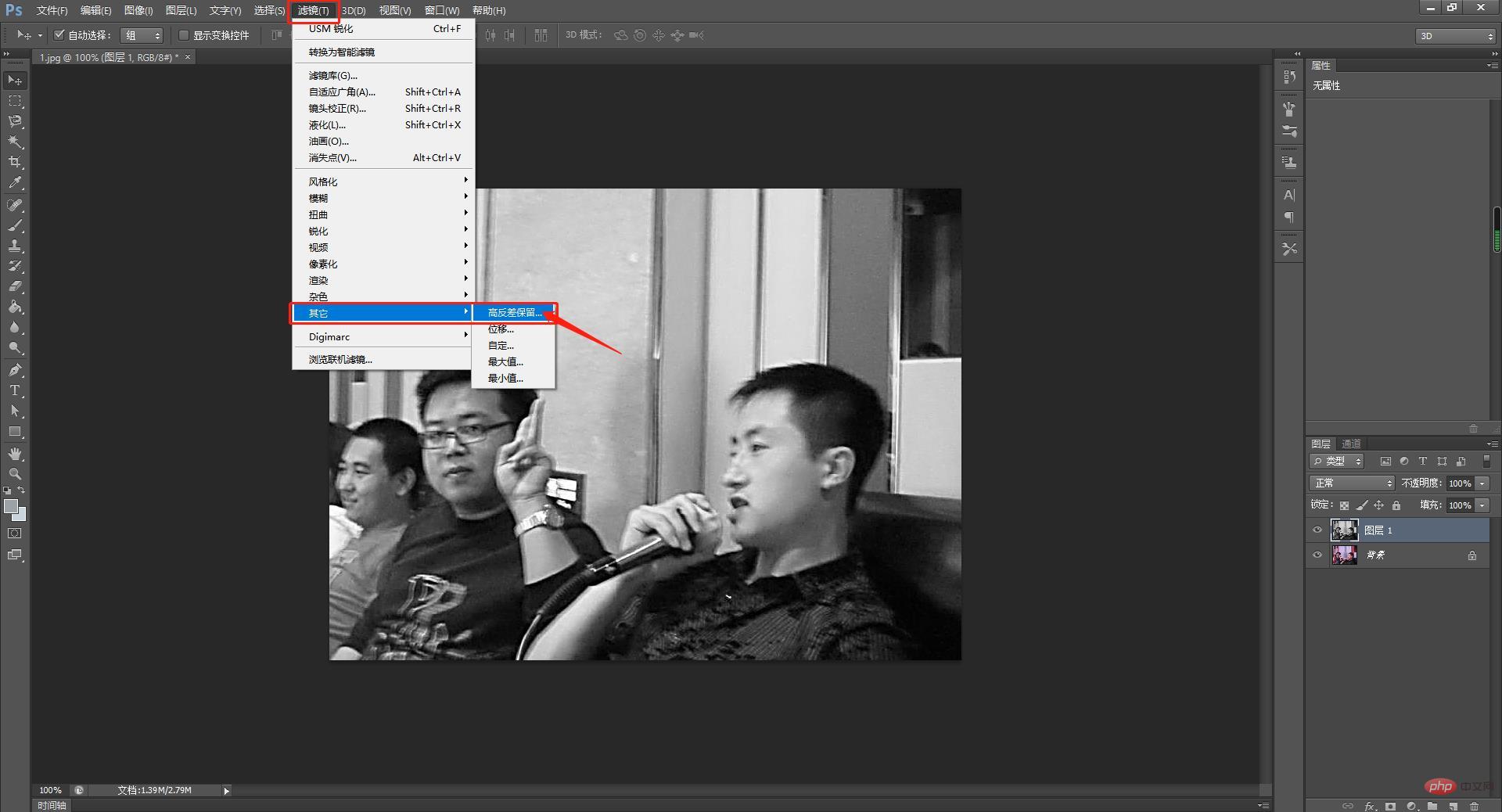
The sixth step, I adjusted the value to 20 at the beginning. At that time, I felt that the layer effect was not obvious, so I performed a high contrast preservation again, as shown in the picture. , at this time our numerical parameter is set to 60.
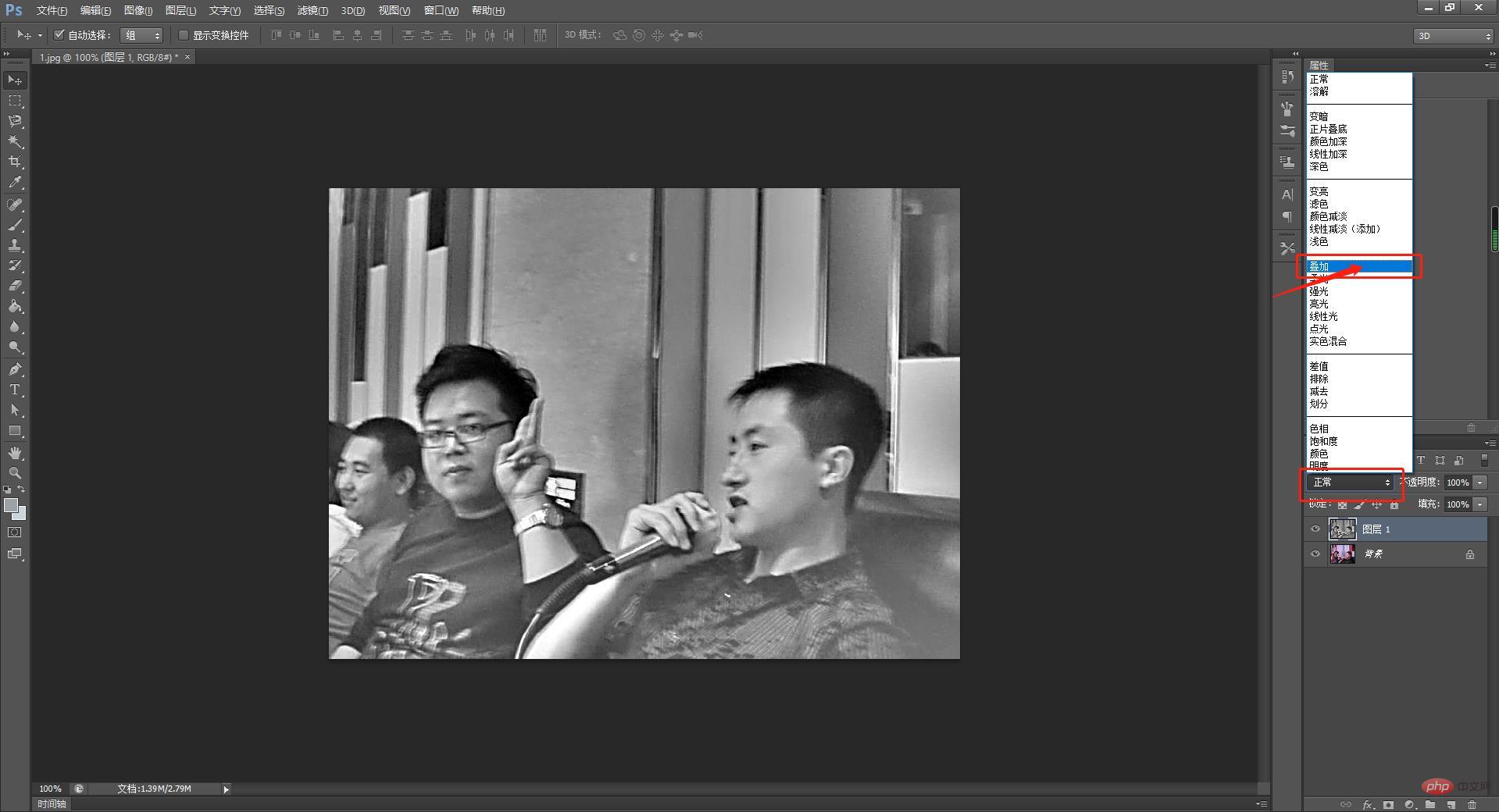
Step 7. After processing, we found that the image was a little clearer, but it became black and white. So in the layer blending mode, we can set the direct mode of the layer, click the small triangle of the layer mode, and find the overlay mode inside, as shown in the figure. You can try other effects by adjusting the blending mode.

The eighth step is to adjust the contrast of the layer. Go to Image--Adjustment--Brightness Contrast to further adjust the contrast parameters of this layer. Adjust
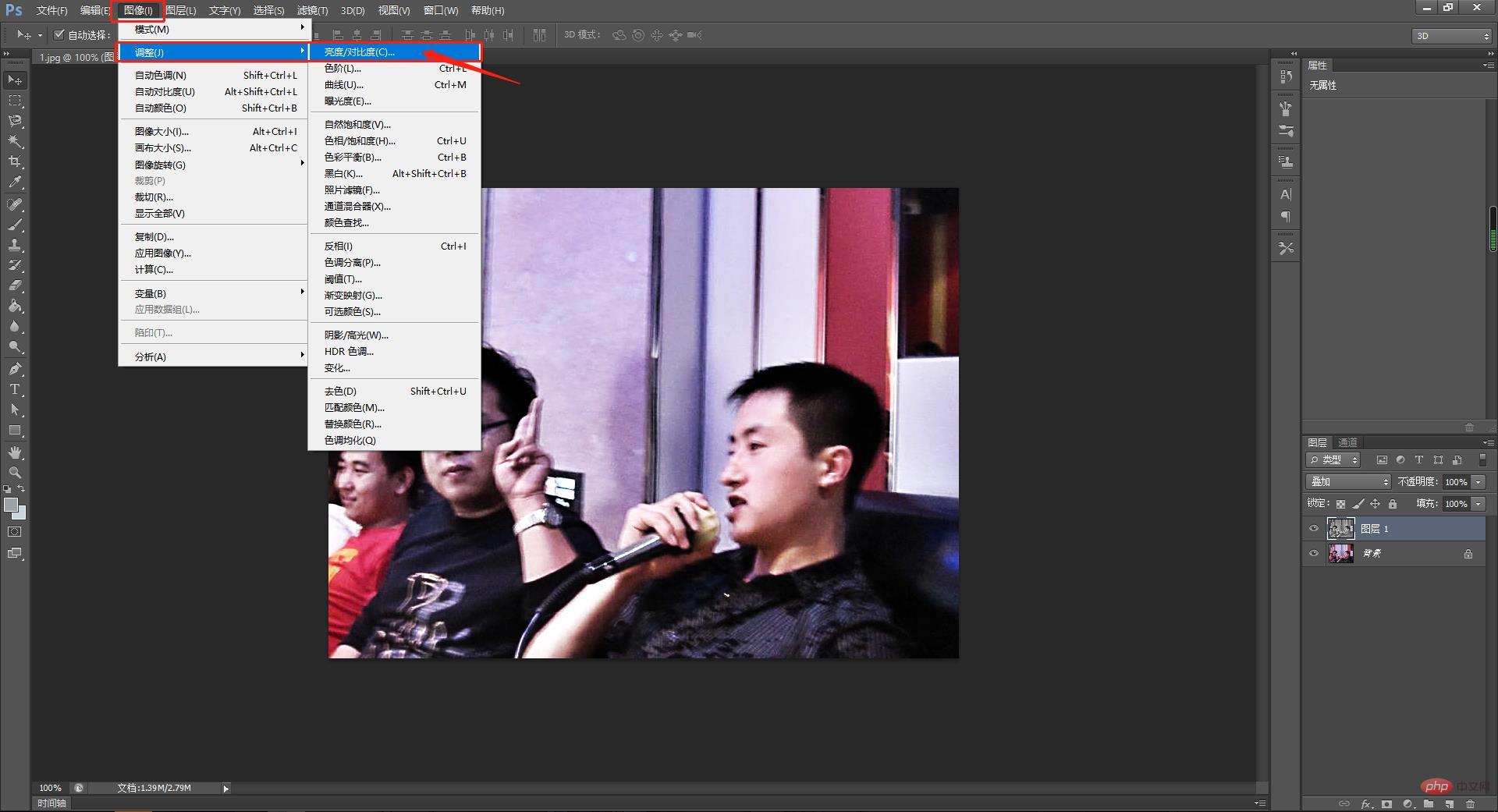
Step 9, as shown in the picture, set the brightness parameter setting dialog box to 3 and contrast to 28. In the same way, these values are what I feel the image is adjusted. It is determined by the effect. Friends can adjust according to their actual situation. The values are for reference only.
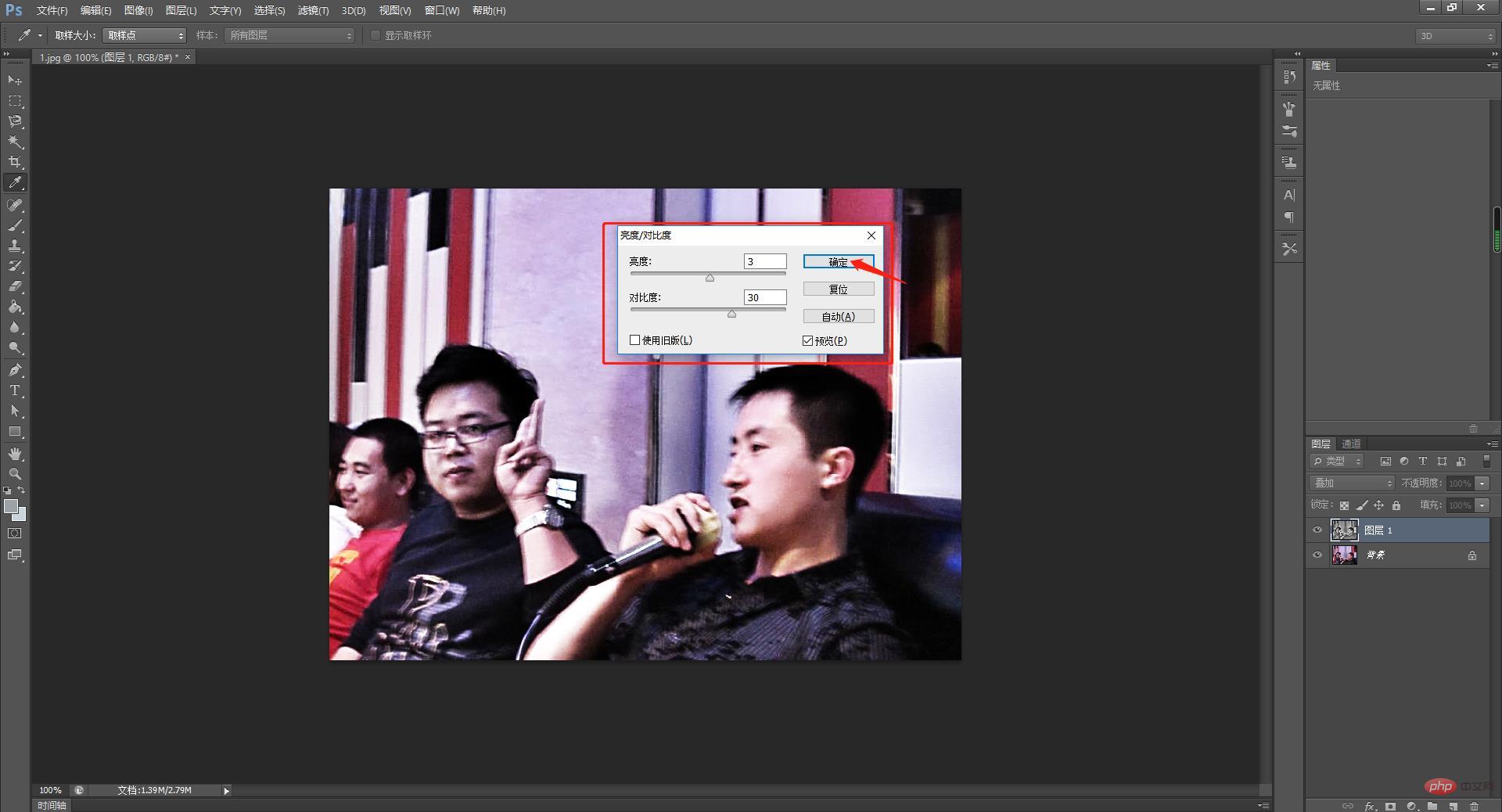
The tenth step is to execute the softening command again. This time when executing USM sharpening, we set the value to be larger, as shown in the figure, the quantity is 160 and the radius is 4 pixels. The unit threshold value is 50 values. The specific value depends on the effect.
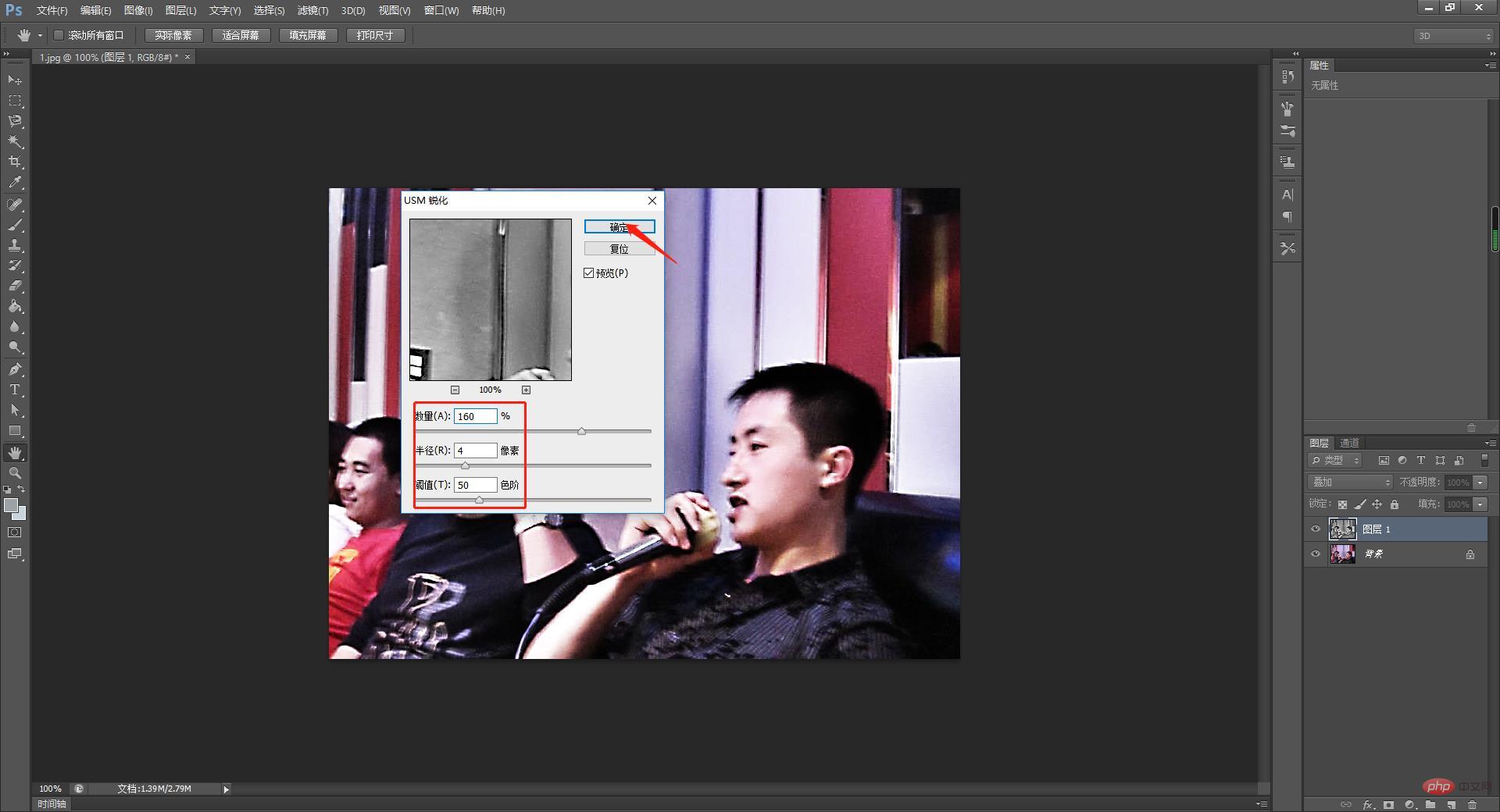
The eleventh step, next we find a channel with obvious contrast in the channel panel. I looked for the blue channel, which is still a layer. It's clear and obvious, so I decided to adjust the blue channel.
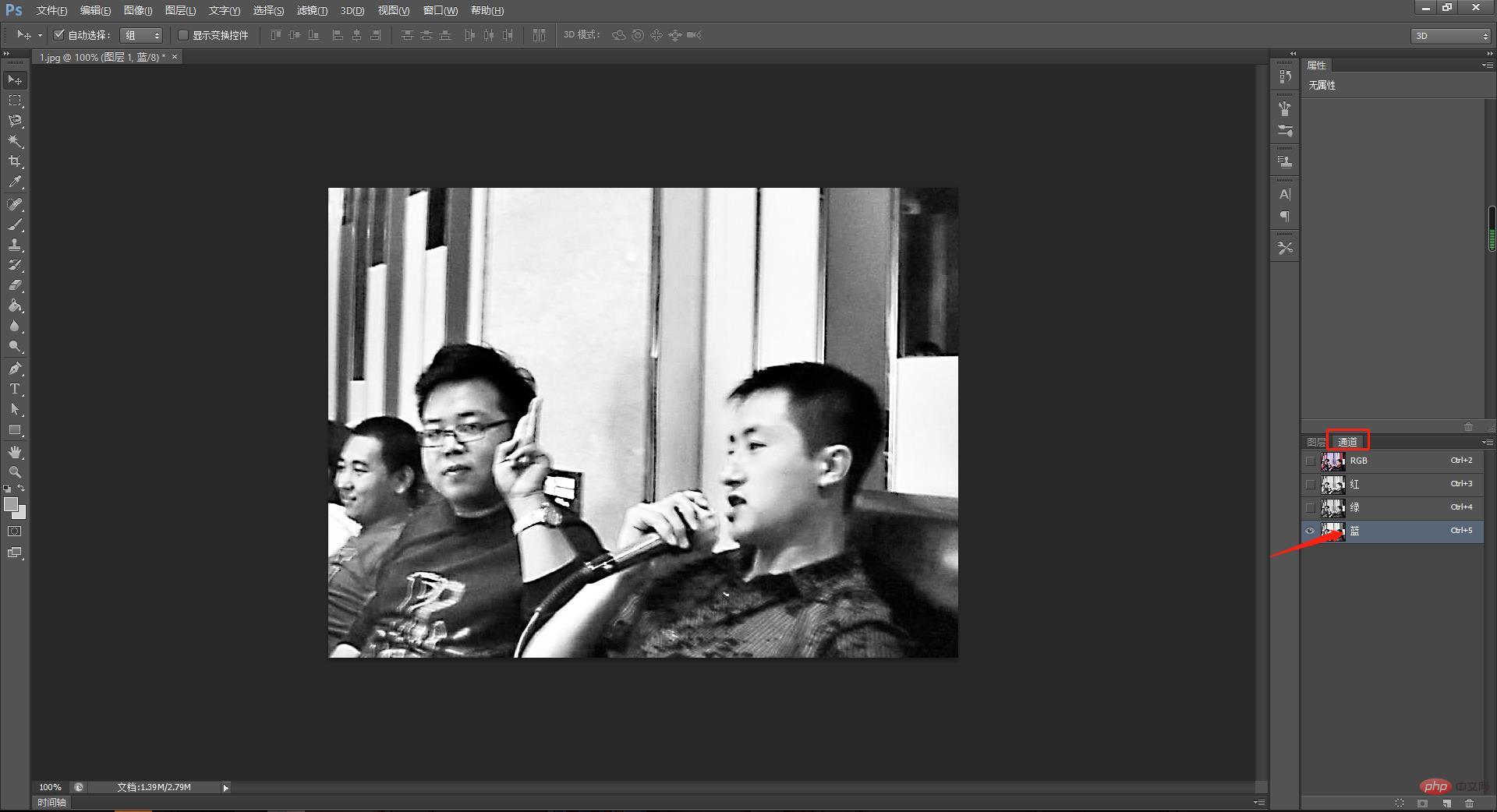
Step 12, bring up the filter library. I want to use the illuminate edge tool in the filter. There is no such command in the filter, so I need to use it in the filter library. Select and call up this command in the mirror library. The path of the specific command is as shown in the figure. This requires us to have a familiar understanding of filter tools so that we can directly find the corresponding filter for the effect we want.
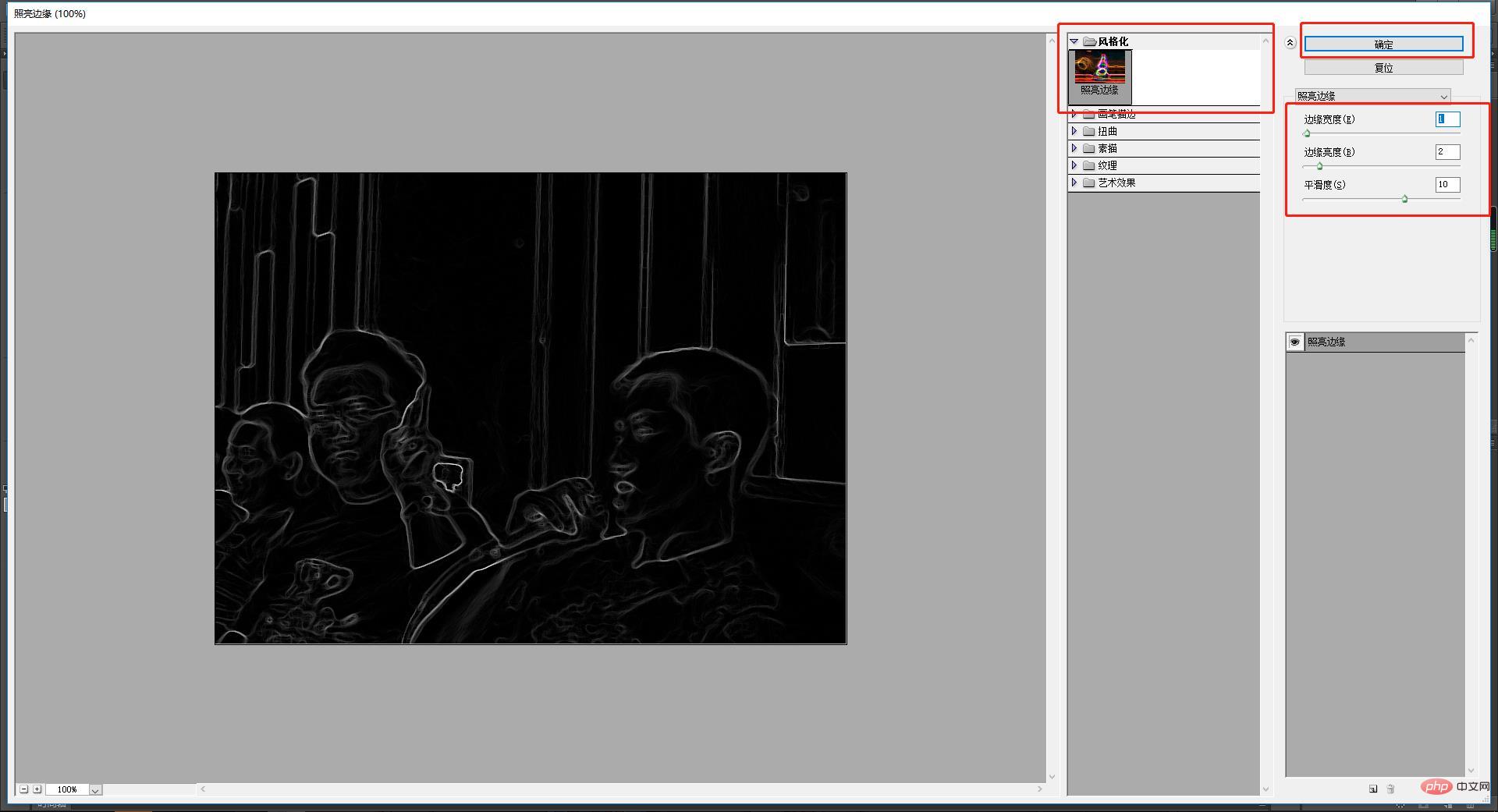
Step 13, next we set the parameters of the edge lighting filter, as shown in the figure, the edge width is set to 3 pixels, the edge lighting is set to 9 pixels, and the smoothness is set to 6 . Then in this case our effect will come out.
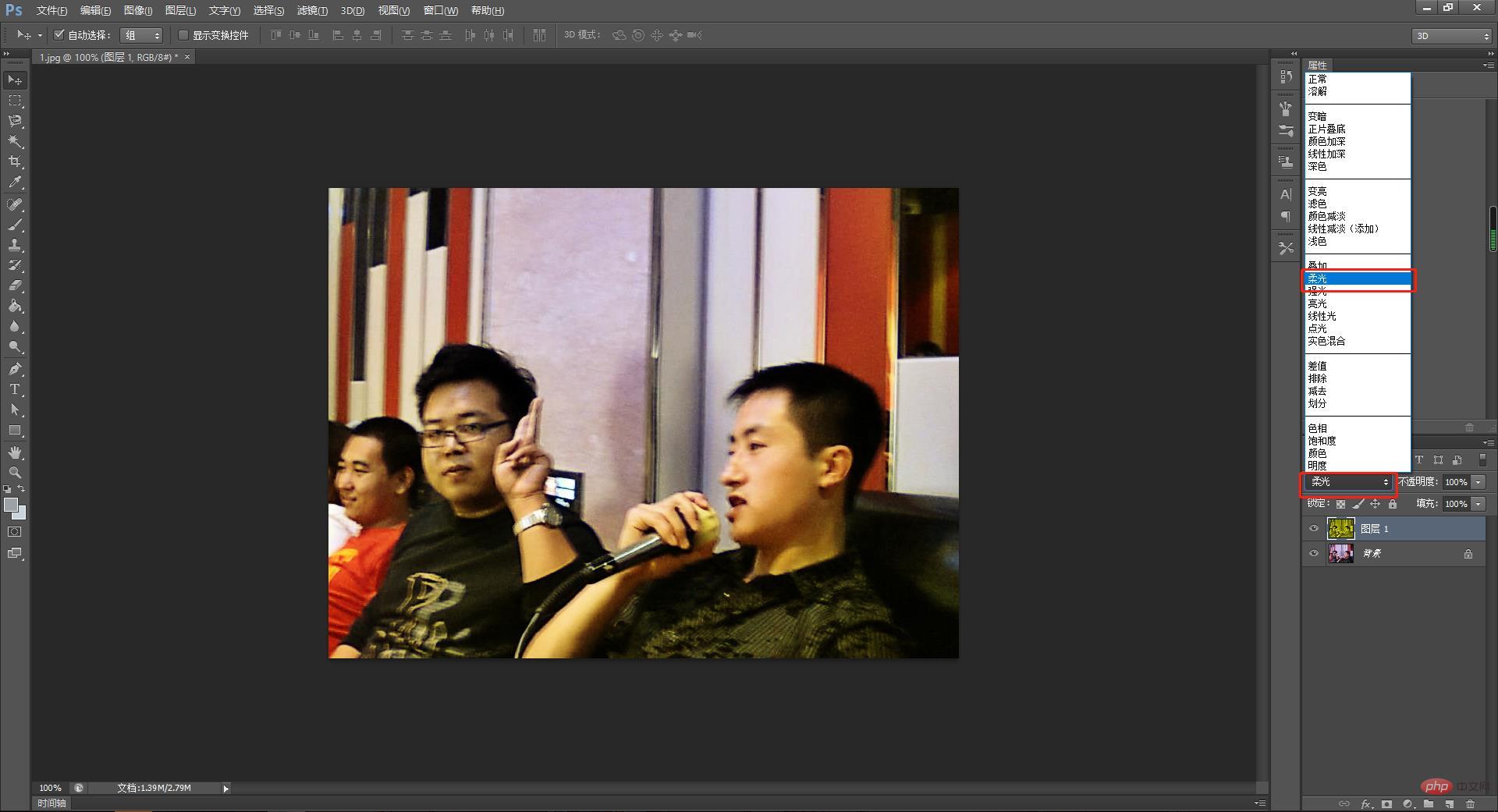
By comparison, it basically meets the requirements I want. If you are still not satisfied, you can use the USM sharpening filter.

Recommended learning: PS video tutorial
The above is the detailed content of How to improve PS resolution? How to sharpen images in PS to improve clarity (implementation steps). For more information, please follow other related articles on the PHP Chinese website!

Hot AI Tools

Undresser.AI Undress
AI-powered app for creating realistic nude photos

AI Clothes Remover
Online AI tool for removing clothes from photos.

Undress AI Tool
Undress images for free

Clothoff.io
AI clothes remover

Video Face Swap
Swap faces in any video effortlessly with our completely free AI face swap tool!

Hot Article

Hot Tools

Notepad++7.3.1
Easy-to-use and free code editor

SublimeText3 Chinese version
Chinese version, very easy to use

Zend Studio 13.0.1
Powerful PHP integrated development environment

Dreamweaver CS6
Visual web development tools

SublimeText3 Mac version
God-level code editing software (SublimeText3)

Hot Topics
 ps serial number cs5 permanently free 2020
Jul 13, 2023 am 10:06 AM
ps serial number cs5 permanently free 2020
Jul 13, 2023 am 10:06 AM
PS serial numbers cs5 permanent free 2020 include: 1. 1330-1384-7388-4265-2355-8589 (Chinese); 2. 1330-1409-7892-5799-0412-7680 (Chinese); 3. 1330-1616-1993 -8375-9492-6951 (Chinese); 4. 1330-1971-2669-5043-0398-7801 (Chinese), etc.
 What to do if ps installation cannot write registry value error 160
Mar 22, 2023 pm 02:33 PM
What to do if ps installation cannot write registry value error 160
Mar 22, 2023 pm 02:33 PM
Solution to error 160 when ps installation cannot write registry value: 1. Check whether there is 2345 software on the computer, and if so, uninstall the software; 2. Press "Win+R" and enter "Regedit" to open the system registry, and then Find "Photoshop.exe" and delete the Photoshop item.
 How to delete selected area in ps
Aug 07, 2023 pm 01:46 PM
How to delete selected area in ps
Aug 07, 2023 pm 01:46 PM
Steps to delete the selected area in PS: 1. Open the picture you want to edit; 2. Use the appropriate tool to create a selection; 3. You can use a variety of methods to delete the content in the selection, use the "Delete" key, use the "Healing Brush Tool" , use "Content-Aware Fill", use the "Stamp Tool", etc.; 4. Use tools to repair any obvious traces or defects to make the picture look more natural; 5. After completing editing, click "File" > in the menu bar "Save" to save the editing results.
 What should I do if the PS interface font is too small?
Dec 01, 2022 am 11:31 AM
What should I do if the PS interface font is too small?
Dec 01, 2022 am 11:31 AM
How to fix the PS interface font that is too small: 1. Open PS, click the "Edit" button on the top menu bar of PS to expand the editing menu; 2. Click the "Preferences" button in the expanded editing menu, and then click "Interface. .." button; 3. In the interface settings, set the user interface font size to "Large", set the UI scaling to "200%" and save the settings, then restart PS to take effect.
 Introduction to the process of extracting line drawings in PS
Apr 01, 2024 pm 12:51 PM
Introduction to the process of extracting line drawings in PS
Apr 01, 2024 pm 12:51 PM
1. Open the software and import a piece of material, as shown in the picture below. 2. Then ctrl+shift+u to remove color. 3. Then press ctrl+J to copy the layer. 4. Then reverse ctrl+I, and then set the layer blending mode to Color Dodge. 5. Click Filter--Others--Minimum. 6. In the pop-up dialog box, set the radius to 2 and click OK. 7. Finally, you can see the line draft extracted.
 How to automate tasks using PowerShell
Feb 20, 2024 pm 01:51 PM
How to automate tasks using PowerShell
Feb 20, 2024 pm 01:51 PM
If you are an IT administrator or technology expert, you must be aware of the importance of automation. Especially for Windows users, Microsoft PowerShell is one of the best automation tools. Microsoft offers a variety of tools for your automation needs, without the need to install third-party applications. This guide will detail how to leverage PowerShell to automate tasks. What is a PowerShell script? If you have experience using PowerShell, you may have used commands to configure your operating system. A script is a collection of these commands in a .ps1 file. .ps1 files contain scripts executed by PowerShell, such as basic Get-Help
 Complete list of ps shortcut keys
Mar 11, 2024 pm 04:31 PM
Complete list of ps shortcut keys
Mar 11, 2024 pm 04:31 PM
1. Ctrl + N: Create a new document. 2. Ctrl + O: Open a file. 3. Ctrl + S: Save the current file. 4. Ctrl + Shift + S: Save as. 5. Ctrl + W: Close the current document. 6. Ctrl + Q: Exit Photoshop. 7. Ctrl + Z: Undo. 8. Ctrl + Y: Redo. 9. Ctrl + X: Cut the selected content. 10. Ctrl + C: Copy the selected content.
 What is the ps curve shortcut key?
Aug 22, 2023 am 10:44 AM
What is the ps curve shortcut key?
Aug 22, 2023 am 10:44 AM
The ps curve shortcut key is Ctrl+M. Other curve shortcut keys: 1. Convert to point control curve, Alt+Shift+Ctrl+T; 2. Automatically align the curve, Alt+Shift+Ctrl+O; 3. Restore the default curve, Ctrl+Alt+Shift+R; 4. Copy the curve, Ctrl+Alt+Shift+C; 5. Paste the curve, Ctrl+Alt+Shift+V; 6. Adjust the curve slope, Shift+up and down arrows; 7. Adjust the curve brightness, Shift+left and right arrows





